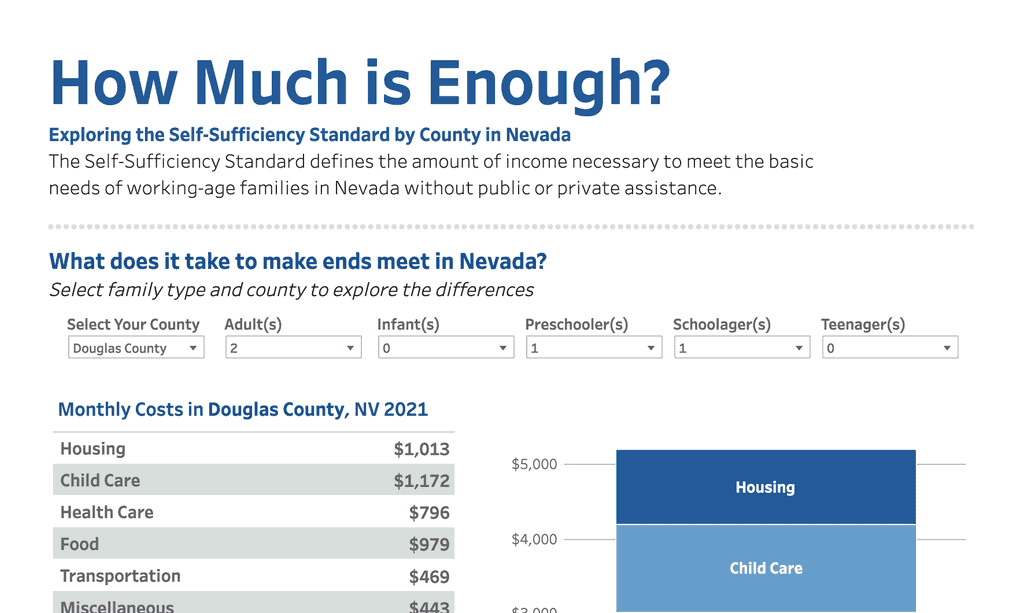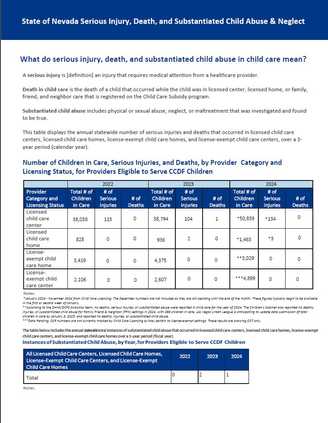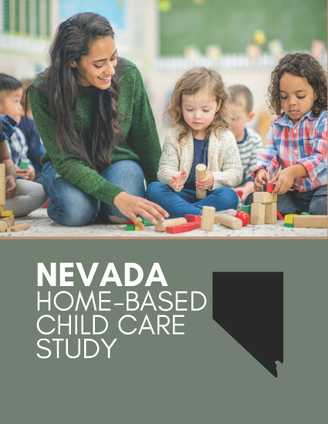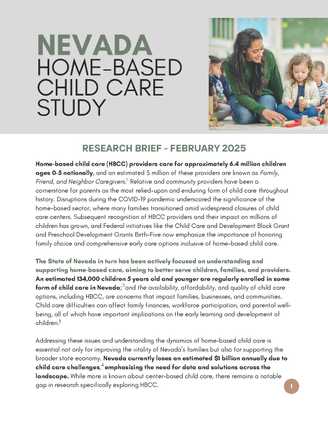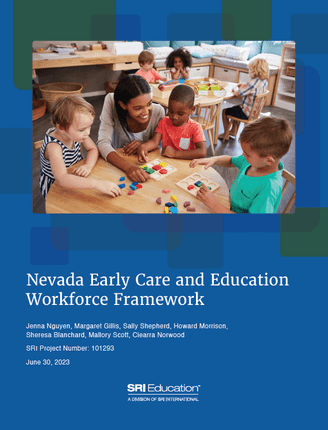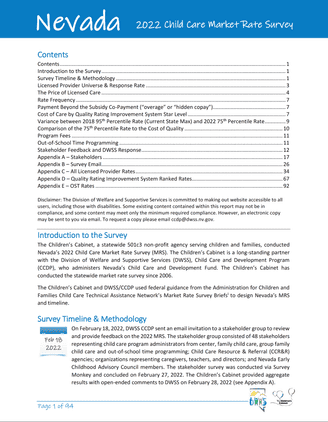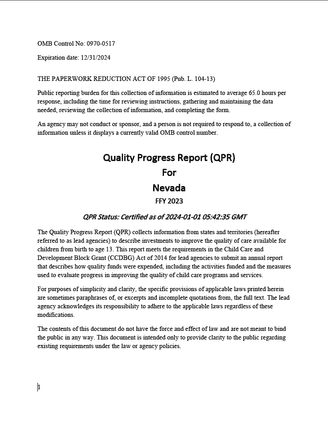Data & Reports
Serious Injury, Death, and Substantiated Abuse & Neglect
This report provides data on serious injuries, deaths, and substantiated cases of abuse and neglect in child care settings from 2022 to 2024. It aims to ensure transparency and inform efforts to improve safety and care standards in child care environments. Child care capacity and complaint data can also be publicly viewed at the CCL website.
Nevada Home-Based Child Care Study
This study offers critical context for Nevada’s early care and education system by gathering insights from parents and HBCC providers on their experiences, available supports, and areas for improvement needed to enhance outcomes for children, families, and caregivers.
Early Childhood Workforce Framework
The Nevada ECE Workforce Framework aims to improve career pathways, support and improve staff wellness, emphasize the value of ECE professionals through equitable compensation, ensure leaders and stakeholders have access to timely and accurate data to inform decision-making, and advocate for future sustained funding for the ECE workforce. In addition to the full report, you can download the Framework Summary here.
2022 Market Rate Report
The Child Care and Development Program (CCDP) of the Division of Welfare and Supportive Services must perform a study of the current licensed child care prices for all providers in Nevada. The state uses these data to set the maximum reimbursement rate for the Subsidy Program. Download the April 1, 2022 Market Rate Report for more information.
Child Care and Development Fund (CCDF) State Plan
The Child Care and Development Fund (CCDF) State Plan Agenda outlines Nevada’s strategy for providing quality child care services to low-income families over the 2025-2027 period. The plan focuses on enhancing child care quality, increasing accessibility, and supporting workforce development.
Quality Progress Report (QPR)
This report provides accountability and transparency for the use of Child Care and Development Fund (CCDF) quality funds, including allocations for infant and toddler care, and COVID relief funding. It tracks progress toward state-set benchmarks for improving child care quality, evaluates efforts to meet children’s developmental needs in all care settings, and informs federal decisions on technical assistance and the strategic use of quality funds.
Nevada Early Childhood Dashboard
This dashboard contains several sections of data related to the needs for investment in the early childhood systems of Nevada.
The dashboard was developed so that stakeholders may better understand the needs of the early childhood serving community, an the changing trends in Nevada’s population.
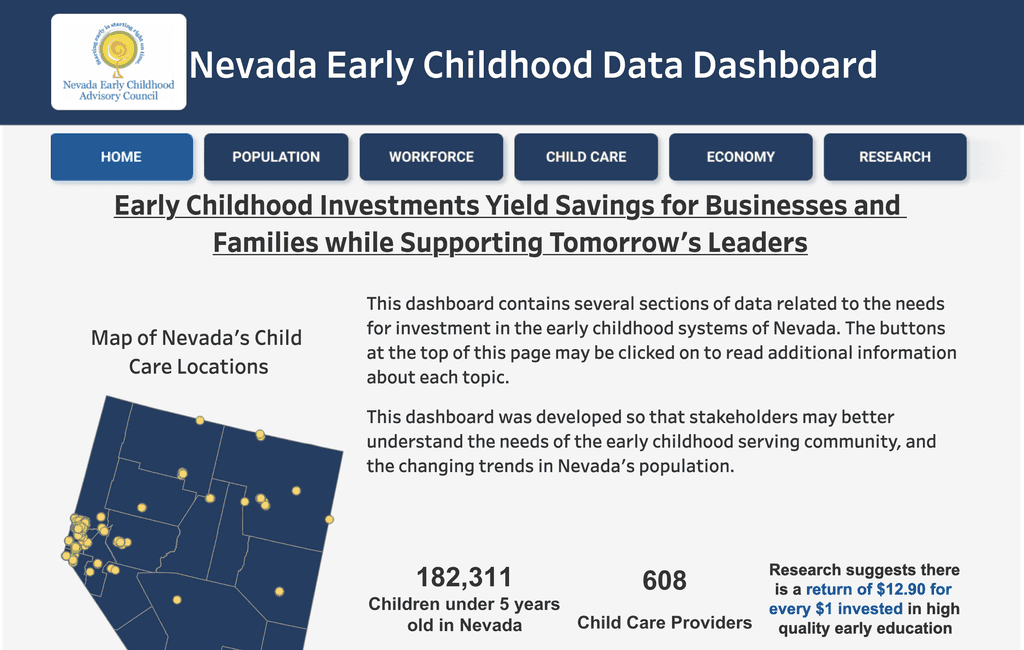
Nevada Child Care Subsidy Data Dashboard
The Child Care Subsidy Data Dashboard summarizes various indicators relating to the need and access to child care in Nevada. Indicators include enrollment counts for the child care subsidy program and poverty rates for families with at least one child under the age of 18.
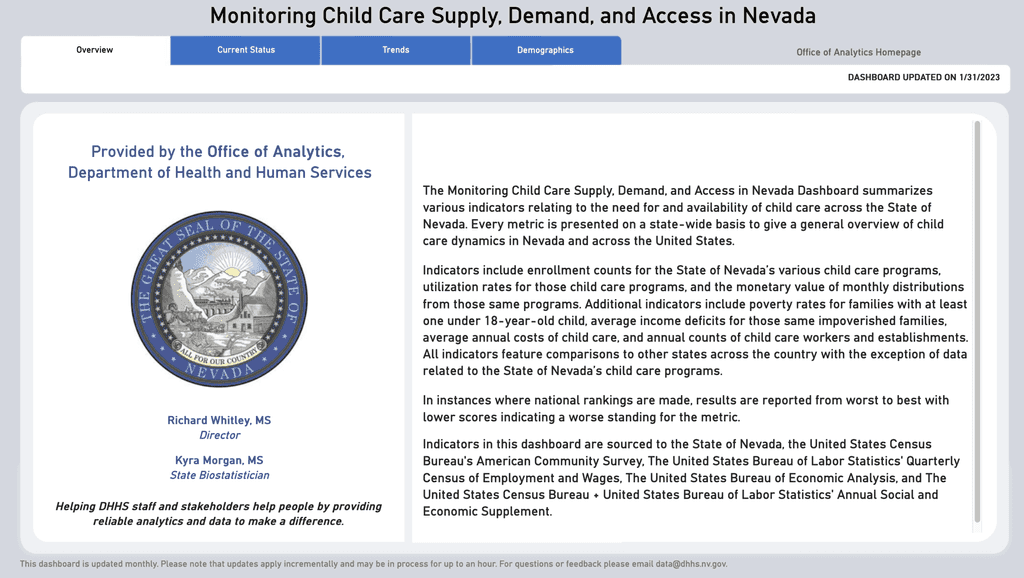
Nevada Self-Sufficiency Data
The Self-Sufficiency Standard defines the amount of income necessary to meet the basic needs of working-age families in Nevada without public or private assistance.
